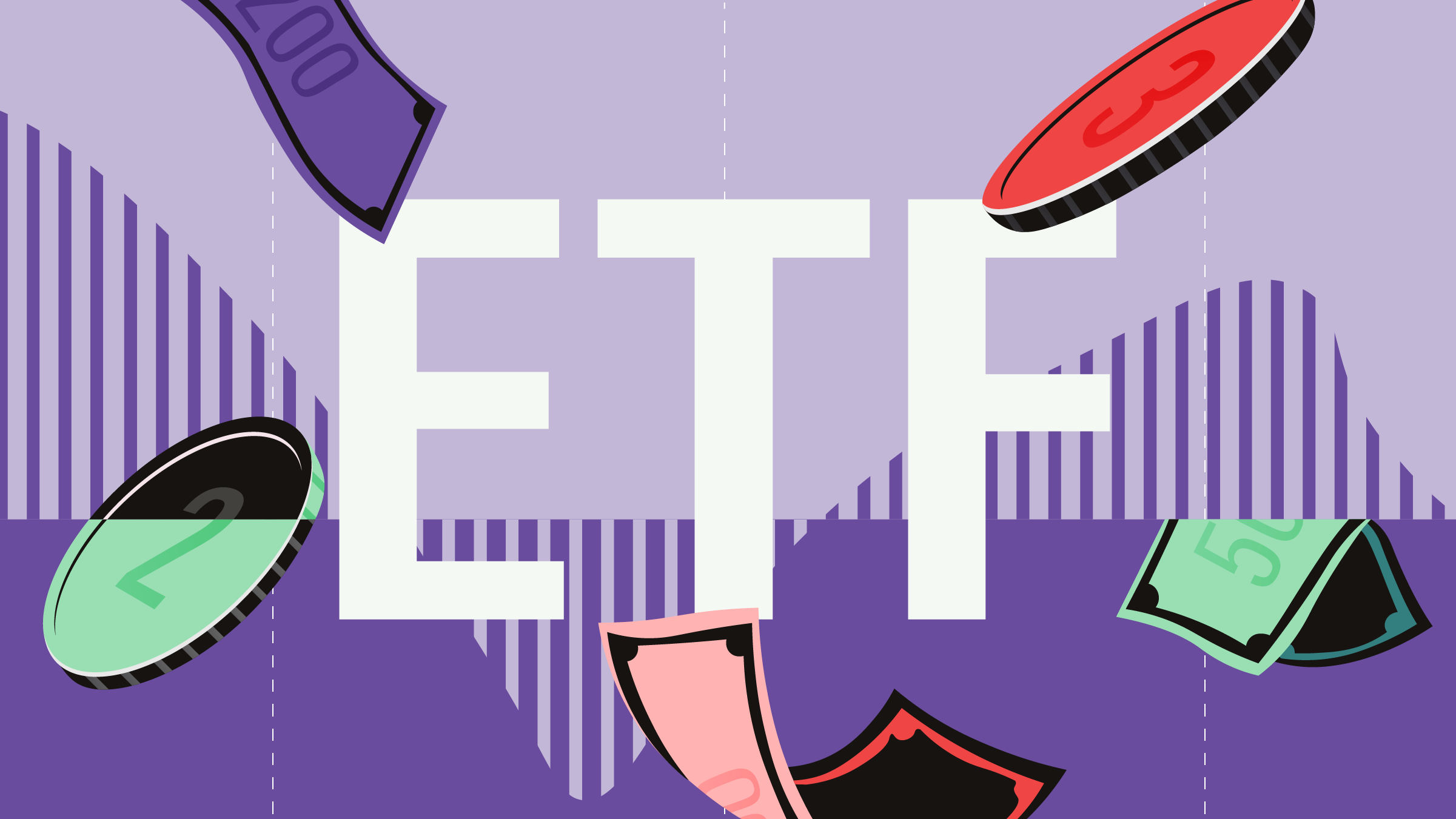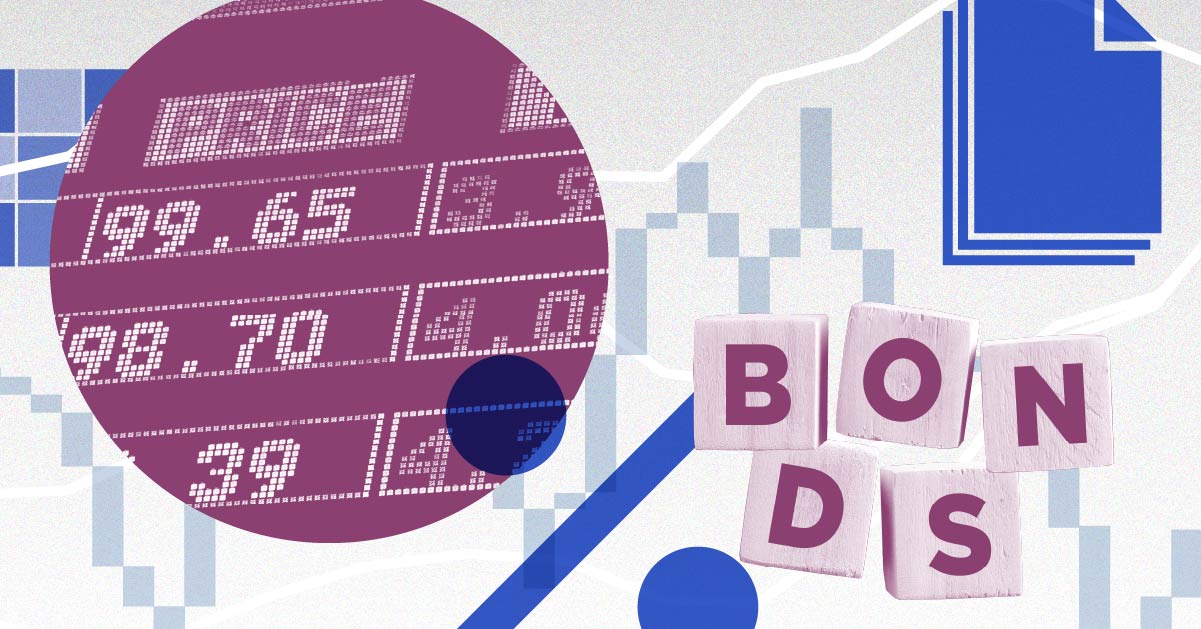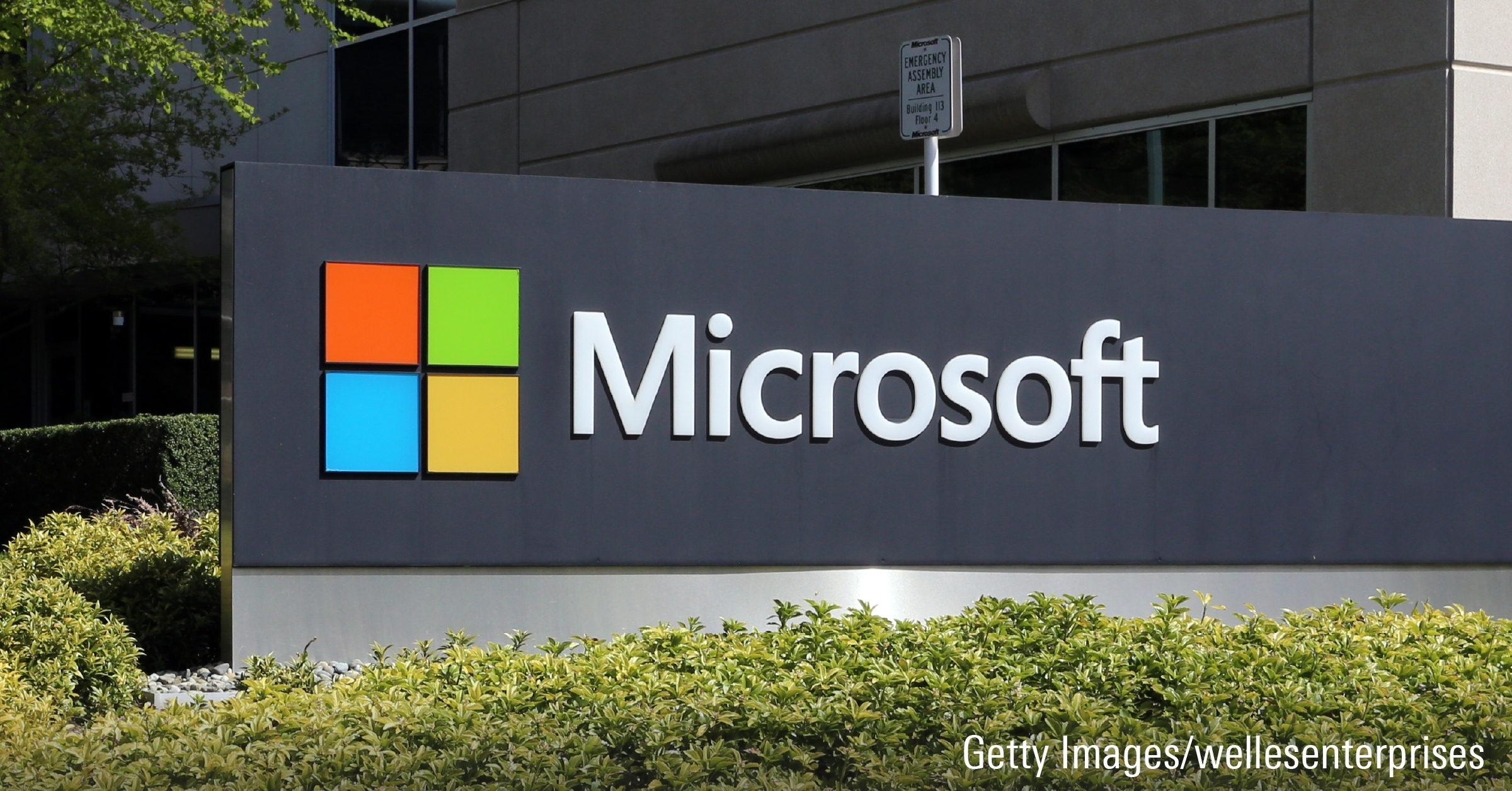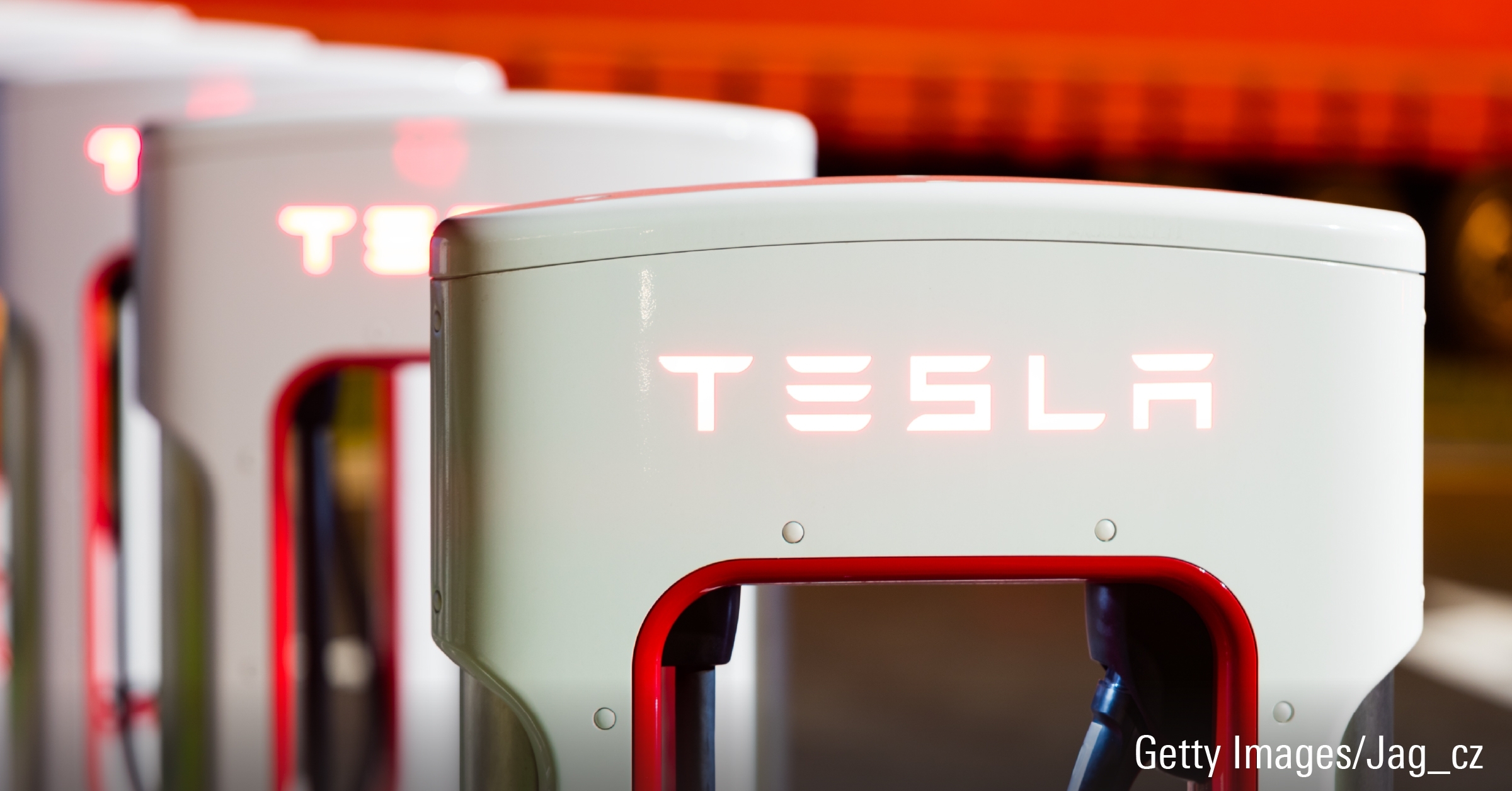
Dividend stocks are popular investments: Many investors rely on the regular dividend payments these stocks offer as sources of passive income. Of course, investors can pursue a total return approach to generating income to meet their spending needs, too. Or they can combine the two income strategies.
Exchange-traded funds that invest in dividend-paying stocks can be simple one-stop solutions for income seekers, for a few reasons:
- Dividend ETFs maintain a portfolio of dividend stocks and thereby provide instant diversification.
- Dividend ETFs are, in general, low cost.
- Dividend ETFs are easy to buy and sell; many of the best dividend ETFs are managed by popular asset managers with brokerage platforms.
Those investors who’d like to get exposure to dividend stocks through an ETF have plenty of highly rated ETFs to choose from.
14 Top High US Dividend ETFs for Passive Income in 2025
These dividend ETFs all earn Morningstar Medalist Ratings of Gold or Silver with 100% analyst coverage and offer trailing yields higher than that of the market as of Feb. 3, 2025.
- Capital Group Dividend Value ETF CGDV
- Fidelity High Dividend ETF FDVV
- FlexShares Quality Dividend ETF QDF
- Franklin U.S. Low Volatility High Dividend ETF LVHD
- Schwab International Dividend Equity ETF SCHY
- Schwab US Dividend Equity ETF SCHD
- SPDR S&P Dividend ETF SDY
- Vanguard Dividend Appreciation ETF VIG
- Vanguard High Dividend Yield ETF VYM
- Vanguard International Dividend Appreciation ETF VIGI
- Vanguard International High Dividend Yield Index ETF VYMI
- WidsomTree US LargeCap Dividend ETF DLN
- WisdomTree US MidCap Dividend ETF DON
- WisdomTree US SmallCap Dividend ETF DES
Morningstar expects the highly rated dividend ETFs on this list to outperform over a full market cycle. But even though the funds on our list of the top high-dividend ETFs all focus on income, they practice very different strategies—and as a result, they can behave very differently from each other. Investors seeking passive income need to do some homework to understand exactly what a particular dividend ETF invests in before buying in.
How to Choose the Best Dividend ETF for Your Portfolio
Here are a few things for investors to think about as they research the funds on our list of top-rated high-dividend ETFs to buy.
Do I want my dividend ETF to invest primarily in the stocks of large US companies? Large US companies have, traditionally, been the bread-and-butter investments for dividend investors. But they’re not the only place to go for dividends. Midsize and small US companies pay dividends, too; in fact, three of the dividend ETFs on our list land in Morningstar’s mid- or small-cap categories. And the yields on many companies abroad are more attractive than those of their US counterparts today: Indeed, three of the best high-dividend ETFs on our list focus on international dividend-payers.
Do I want my dividend ETF to be passive or active? Most high-dividend ETFs are passive interments, which means they’re tracking a particular index; there’s no manager actively picking stocks. In fact, just one of the names on our list of top high-dividend ETFs is actively managed.
Do I want a monthly dividend ETF? Although investors may own dividend ETFs to supplement their monthly income needs, most ETFs do not pay monthly dividends. Instead, most dividend ETFs—and most dividend stocks in the US, for that matter—pay quarterly dividends instead. Not surprisingly, only three funds on our list of top dividend ETFs pay monthly dividends.
Do I want a dividend yield or dividend group approach? Some dividend strategies are focused more on absolute yield while others emphasize the growth of a dividend over time and care less about what a stock’s current yield is. Many strategies rest somewhere between the two.
Read more: How to Choose a Dividend FundHere’s a look at each of the best high-dividend ETFs along with a commentary from the Morningstar analyst who covers the ETF.
Capital Group Dividend Value ETF
- Morningstar Medalist Rating: Silver
- Morningstar Category: Large Value
- 12-Month Yield: 1.53%
- Dividend Frequency: Quarterly
- Active or Passive: Active
- Top 3 Sectors: Industrials, Technology, Healthcare
Capital Group Dividend Value ETF is the only actively managed fund on our list of top high-dividend stocks; it’s also the lowest-yielding option of the group.
“The fund’s requirements center on income. In aiming for a dividend yield before fees that is 30% greater than the S&P 500, the fund mostly sticks to US investment-grade companies with a long history of paying dividends. In fact, the majority of firms have paid dividends every year for the past 10 years.
Still, the managers do have some flexibility to invest outside those guidelines. Managers can invest up to 10% of the fund’s assets to non-dividend-payers that combine ongoing superior profitability with modest leverage relative to industry peers. They can also invest up to 10% of assets in non-US companies. Typically, the managers like to stick with large multinational companies that don’t have great US counterparts.
This fund tracks the firm’s Capital Group Dividend Value composite, which goes back to 2001. The strategy’s focus on dividends has led to a compact portfolio, with the ETF holding roughly 50 stocks. It tends to be more value-oriented relative to its prospectus benchmark, the S&P 500, and has typically landed near the value-blend border of the Morningstar Style Box. That said, it has bounced around being more correlated to the S&P 500 and Russell 1000 Value Index at times.
Stephen Welch, Morningstar senior analyst
Review Morningstar’s full report about Capital Group Dividend Value ETF.
Fidelity High Dividend ETF
- Morningstar Medalist Rating: Silver
- Morningstar Category: Large Value
- 12-Month Yield: 2.91%
- Dividend Frequency: Quarterly
- Active or Passive: Passive
- Top 3 Sectors: Technology, Industrials, Consumer Defensive
Fidelity High Dividend ETF’s yield lands around the middle of the pack, which aligns with a strategy that focuses on high dividend yield with a nod to dividend growth.
Fidelity High Dividend ETF is an unorthodox strategy that balances high yield against high quality, a rare and attractive combination that should continue to drive strong long-term performance.
This index strategy takes a well-rounded approach to stock selection. Yield is the main consideration. That may give investors pause because the highest-yielding stocks tend to be some of the riskiest. The fund combats that drawback by incorporating payout ratio and dividend growth—signals of financial health—into stock selection. It also screens out firms with the worst payout ratios because companies that distribute too much of their profits can be left with little margin for error. Some sinking stocks will slip through the cracks, but these measures reject many of the market’s riskiest firms and breed a high-quality portfolio.
Sensibly, the strategy evaluates companies on a sector-relative basis. That facilitates cleaner comparisons between stocks and emphasizes sectors that most dividend funds overlook, like technology. To ensure that doesn’t hurt its yield, this fund reallocates portfolio weight from lower-yielding sectors (like technology) to higher-yielding ones (like real estate) at each rebalance. This drums up more income and highlights sectors that look cheap relative to their dividends.
A unique weighting system confers many of market-cap weighting’s benefits and keeps concentration in check. The fund weights stocks in proportion to their market capitalization, then layers on a layer of equal weight that boosts smaller stocks. This feature promotes diversification and can minimize the impact of riskier high-yield holdings. And unlike most US-focused peers, this fund may allocate up to 10% of its portfolio to international stocks, further improving yield and diversification.
Ryan Jackson, Morningstar analyst
Review Morningstar’s full report about Fidelity High Dividend ETF.
FlexShares Quality Dividend ETF
- Morningstar Medalist Rating: Silver
- Morningstar Category: Large Value
- 12-Month Yield: 1.89%
- Dividend Frequency: Quarterly
- Active or Passive: Passive
- Top 3 Sectors: Technology, Financial Services, Communication Services
FlexShares Quality Dividend ETF has more exposure to technology stocks—33% of its portfolio—than any other fund on our list of top high-dividend stocks.
FlexShares Quality Dividend ETF remains a stellar option because it follows a savvy blueprint that ushers in profitable dividend stocks, muffles unrewarded risks, and charges a low fee.
The Northern Trust Quality Dividend Index, which underpins this fund, aims to deliver three things: better yield than the broad market, exposure to the quality factor, and the same market sensitivity as a broad stock market index. Pursuing yield can be a risky endeavor because the highest-yielding stocks often have weak fundamentals and sinking valuations. Focusing on quality helps the fund sidestep this risk while meeting its yield objective.
Bending toward higher-quality stocks should boost fund performance and limit risk. The quality factor has historically been tied to market-beating returns. The fund measures quality on a sector-relative basis, considering stocks’ profitability, cash flow, and management efficiency—a complete evaluation that should highlight standouts in each sector.
The fund anchors its sector allocation to its parent index, the broad-market Northern Trust 1250 Index. This breeds a different sector composition than the unconstrained Russell 1000 Value Index, its category benchmark. Technology accounts for much more of this portfolio, while it underweights statistically cheaper sectors like energy and utilities. Matching the market’s sector allocation shields the fund from potentially unrewarded biases, but it can breed volatile index-relative performance when different sectors disperse.
Ryan Jackson, Morningstar analyst
Review Morningstar’s full report about FlexShares Quality Dividend ETF.
More About Dividend ETFs, Funds and Stocks
Is It Time to Reconsider Dividend Funds?
Why Have Dividend Stock Strategies Been Underperforming?
Franklin US Low Volatility High Dividend ETF
- Morningstar Medalist Rating: Silver
- Morningstar Category: Large Value
- 12-Month Yield: 4.17%
- Dividend Frequency: Quarterly
- Active or Passive: Passive
- Top 3 Sectors: Utilities, Consumer Defensive, Real Estate
At 23%, this fund’s exposure to utilities stocks dwarfs those of funds on our top dividend ETFs to buy list—and its yield is the highest among the ETFs here that focus largely on US stocks.
Franklin US Low Volatility High Dividend ETF attempts to strike a delicate balance between offering an attractive yield while also maintaining below-average risk. Its portfolio of stable dividend-payers should offer solid downside protection while delivering competitive payouts.
The fund tracks the QS Low Volatility High Dividend Index. The index screens for stocks with attractive yet durable yields, excluding those with insufficient earnings to support their dividends. To further narrow the opportunity set, the index assigns each remaining eligible stock a stable yield score, which favors those exhibiting low historical price and earnings volatility. An optimizer constructs the final portfolio that seeks to maximize yield and minimize risk. It imposes individual holding and sector weight limits as well as liquidity constraints. These constraints mitigate the portfolio’s firm-specific risk and capacity concerns, given it does reach into small-cap territory.
The strategy consistently delivers a higher trailing 12-month yield than the Russell 1000 Value Index, but it can lag some dividend-focused strategic-beta peers because of its strict inclusion criteria. The rigorous dividend-screening process and incorporation of a stable yield score effectively control for risk in this historically volatile market segment.
The fund falls into the large-value Morningstar Category, but its sector composition diverges substantially from the category index owing to its dividend focus. The fund is overweight utilities and consumer defensive stocks at the expense of financial services and healthcare. The index does not impose any turnover constraints, which can cause turnover to run high at each quarterly rebalance. Historically, turnover has ranged from 30% to 50%, depending on market conditions.
Zachary Evens, Morningstar analyst
Review Morningstar’s full report about Franklin U.S. Low Volatility High Dividend ETF.
Schwab International Dividend Equity ETF
- Morningstar Medalist Rating: Silver
- Morningstar Category: Foreign Large Value
- 12-Month Yield: 4.46%
- Dividend Frequency: Quarterly
- Active or Passive: Passive
- Top 3 Sectors: Financial Services, Consumer Defensive, Communication Services
Schwab International Dividend Equity ETF is the first of three foreign-stock funds on our list of top high-dividend ETFs to buy—and its yield is among the highest here.
Schwab International Dividend Equity ETF builds a high-yield portfolio around stocks that are more profitable and stable than the market. Those characteristics, combined with a low fee, should lead to better risk-adjusted performance than the MSCI ACWI ex-USA Value Index.
This exchange-traded fund tracks the Dow Jones International Dividend 100 Index. This bogy starts with stocks in the Dow Jones Global ex-US Large-Cap and Dow Jones Global ex-US Mid-Cap indexes, and it refines those cohorts down to a select portfolio of just 100 stocks. It excludes REITs and searches for stocks with high dividend yields, greater profitability and free cash flow, lower volatility, and a long history of regular cash dividend payments. It focuses on the top names that meet these criteria while incorporating some buffer rules to keep turnover within reasonable levels. The fund also promotes diversification by limiting single stock weightings to 4%, sector weightings to 15%, and emerging markets to 15%.
The resulting portfolio favors dividend-payers that are likely to maintain their dividend payments. On average, its profitability has been consistently higher than the MSCI ACWI ex-USA Value Index’s, and it has tended to incur less of the market’s risk. The portfolio’s preference for stable companies tends to influence its composition.
Daniel Sotiroff, Morningstar senior analyst
Review Morningstar’s full report about Schwab International Dividend Equity ETF.
Schwab US Dividend Equity ETF
- Morningstar Medalist Rating: Gold
- Morningstar Category: Large Value
- 12-Month Yield: 3.57%
- Dividend Frequency: Quarterly
- Active or Passive: Passive
- Top 3 Sectors: Financial Services, Healthcare, Consumer Defensive
Schwab US Dividend Equity ETF is the first of four Gold-rated funds on our list of the best high-dividend ETFs to buy.
Schwab US Dividend Equity ETF stands out for its sensible, transparent, and risk-conscious approach that should continue to generate better long-term risk-adjusted returns than the Russell 1000 Value Index.
The Dow Jones US Dividend 100 Index underpinning this fund admits 100 stocks that have paid dividends for at least 10 consecutive years and boast the financial health to extend that streak. Industry fixtures like Coca-Cola and Home Depot meet those requirements and sit atop the portfolio. Dividend-oriented firms with healthy balance sheets tend to be more insulated from market movements than highflyers or low-quality competitors, so this fund normally strikes a defensive stance.
Strict stock-selection criteria give this fund potent exposure to the quality factor, which has historically been tied to market-beating returns. The fund comfortably and consistently beats the Russell 1000 Value Index in profitability metrics like return on invested capital. Quality doesn’t come cheap, but focusing on the higher-yielding half of the market and tilting toward mature franchises lands the fund in the large-value category.
Stocks that make the cut are weighted by market cap, an efficient approach that channels the market’s collective view on each stock’s relative value. It also muffles the impact of riskier, higher-yielding holdings because stock weightings rise and fall alongside valuations. The fund limits each stock’s weighting to 4% of the portfolio and each sector to 25%. Concentration can bubble up in lean portfolios like this one, so these measures help the fund stay diversified.
Ryan Jackson, Morningstar analyst
Read Morningstar’s full report about Schwab US Dividend Equity ETF.
SPDR S&P Dividend ETF
- Morningstar Medalist Rating: Silver
- Morningstar Category: Mid-Cap Value
- 12-Month Yield: 2.51%
- Dividend Frequency: Quarterly
- Active or Passive: Passive
- Top 3 Sectors: Consumer Defensive, Industrials, Utilities
SPDR S&P Dividend ETF is one of only two mid-cap funds among our best high-dividend ETFs for passive income.
SPDR S&P Dividend ETF’s demanding dividend requirement breeds a high-quality portfolio of disciplined companies. It sacrifices some upside for stability but should continue to reward long-term investors willing to accept the trade-off.
This index strategy admits only stocks that have increased their dividend for 20 straight years, a strict requirement that confers more pros than cons. The firms that meet it aren’t flashy but generate reliable profits. Focusing on these high-quality companies helps the fund weather bear markets better than most, though it normally lags during rallies.
The pedigree of this portfolio makes its yield-weighting approach a good fit. Weighting stocks based on dividend yield is risky because it can emphasize stocks with declining prices. But these firms’ track records mean that their dips are often opportunities to buy low—not the start of a permanent slide. Yield weighting pulls the fund into the mid-value Morningstar Category despite selecting stocks from the broad-based S&P 1500 Index.
This strategy is not perfect. Requiring 20 years of dividend growth turns away worthy candidates that fall just short. The index also ignores forecasted metrics that can identify firms at risk to cut their dividends. Forward-looking screens may have jettisoned 3M before its reduced dividend forced the fund to in May 2024. The winners have outnumbered the losers over the fund’s nearly 20 years on the market, though.
Ryan Jackson, Morningstar analyst
Read Morningstar’s full report about SPDR S&P Dividend ETF.
Vanguard Dividend Appreciation ETF
- Morningstar Medalist Rating: Gold
- Morningstar Category: Large Blend
- 12-Month Yield: 1.67%
- Dividend Frequency: Quarterly
- Active or Passive: Passive
- Top 3 Sectors: Technology, Financial Services, Healthcare
Vanguard Dividend Appreciation ETF is the only name on our list of top high-dividend ETFs that lands in the large-blend category, which is in line with its focus on dividend growth.
Vanguard Dividend Appreciation pulls in stable, profitable firms that have consistently increased their dividends for over a decade. Its established constituents insulate the portfolio from volatility and should lead to a long-term risk-adjusted advantage.
This strategy tracks the S&P US Dividend Growers Index, which targets US stocks that have increased their dividend payments for at least 10 consecutive years. It eliminates the highest-yielding names from that cohort to ensure its holdings are financially stable and more likely to continue making dividend payments. The index weights its holdings by their free-float-adjusted market cap, which leverages the market’s collective wisdom and helps mitigate turnover and associated trading costs. It also limits individual stocks to 4% of the portfolio at the annual rebalance to promote diversification.
Targeting stocks with 10 years of dividend growth is a strict hurdle that provides a big advantage. It indirectly targets profitable companies that not only have the capacity to increase their dividend payments but also a willingness to do so. Combining yield and quality results in a balanced stable of more than 300 companies. However, if a company were to miss a single dividend payment, it would have to wait 10 years before it is welcomed back. Still, this is a worthwhile trade-off that keeps the portfolio full of high-quality companies that should continue to increase their dividends.
The strategy’s strict requirements tend to weed out recent highflyers. Likewise, excluding the highest-yielding eligible stocks reduces the portfolio’s exposure to value traps without giving up the fund’s yield advantage over the broad market.
Bryan Armour, Morningstar director
Read Morningstar’s full report about Vanguard Dividend Appreciation ETF.
Vanguard High Dividend Yield ETF
- Morningstar Medalist Rating: Gold
- Morningstar Category: Large Value
- 12-Month Yield: 2.64%
- Dividend Frequency: Quarterly
- Active or Passive: Passive
- Top 3 Sectors: Financial Services, Technology, Consumer Defensive
The second of four Vanguard funds among our group of the best high-dividend ETFs, Vanguard High Dividend ETF differs from its predecessor on our list by emphasizing dividend yield over dividend growth.
Vanguard High Dividend Yield strikes a balance between higher yield and managing the associated risk. Market-cap-weighting steers the portfolio toward more stable large-cap stocks and away from those whose dividends may be distressed.
This fund tracks the FTSE High Dividend Yield Index. It starts with large- and mid-cap stocks in the FTSE USA Index, excluding REITs, and ranks them by their expected dividend yield over the next 12 months. The index selects those representing the higher-yielding half of eligible dividend-paying stocks. Selected holdings are weighted by float-adjusted market cap, pulling the portfolio toward larger, more stable stocks.
Focusing on dividend yield gives the portfolio a value orientation that can open the portfolio to risk. Value traps, or stocks with deteriorating fundamentals and declining prices, pose a significant risk to dividend funds. But this strategy limits its exposure to risky companies. Sweeping half of the dividend-paying universe into its portfolio diversifies stock-specific risks and limits the influence of distressed firms. Market-cap-weighting also emphasizes larger, more-stable firms that should have the capacity to continue making dividend payments. This mitigates the impact of value traps because their weight drops as their prices fall.
Leaning toward stable companies comes at the cost of maximizing dividend yield. But the fund’s yield still typically surpasses the Russell 1000 Value Index by about 1 percentage point. Stability extended to performance as well, with the fund historically experiencing a standard deviation consistently lower than its Morningstar Category bogy.
Like other dividend funds, this portfolio’s sector composition can deviate substantially from the category index, owing to its yield orientation.
Bryan Armour, Morningstar director
Read Morningstar’s full report about Vanguard High Dividend Yield ETF.
Vanguard International Dividend Appreciation ETF
- Morningstar Medalist Rating: Gold
- Morningstar Category: Foreign Large Growth
- 12-Month Yield: 1.87%
- Dividend Frequency: Quarterly
- Active or Passive: Passive
- Top 3 Sectors: Industrials, Healthcare, Technology
Vanguard International Dividend Appreciation’s exposure to healthcare stocks is the highest among the top high-dividend ETFs featured here. The fund is also among the lower-yielding ETFs on the list, which is unsurprising given its emphasis on dividend growth.
Vanguard International Dividend Appreciation effectively captures high-quality firms with consistent dividend growth that should offer attractive long-term performance. Its established constituents insulate the portfolio from volatility and should lead to a long-term risk-adjusted advantage.
This fund tracks the S&P Global Ex-US Dividend Growers Index, which targets large- and mid-cap stocks from developed and emerging markets that have increased their dividend payments for at least seven consecutive years. It eliminates the highest-yielding names from that cohort to ensure its holdings are financially stable and more likely to continue making dividend payments. The index weights its holdings by free-float adjusted market cap to help mitigate turnover and trading costs. It also limits individual stocks to 4% of the portfolio at the annual rebalance to improve diversification.
Targeting stocks with seven years of dividend growth is a strict hurdle that provides a big advantage. It indirectly targets profitable companies that not only have the capacity to make dividend payments but also a willingness to do so. However, the strategy doesn’t consider other metrics, such as debt levels and analyst earnings growth estimates, which may be indicative of a firm’s capacity to continue making payments. Additionally, if a company were to miss a single dividend payment it must wait seven years before it is welcomed back.
Overseas companies that have a history of increasing their dividend payments are also likely to be those that have been consistently growing profitably. These stable businesses should be less volatile than the broader market and tend to hold up better during downturns.
Bryan Armour, Morningstar director
Read Morningstar’s full report about Vanguard International Dividend Appreciation ETF.
Vanguard International High Dividend Yield Index ETF
- Morningstar Medalist Rating: Silver
- Morningstar Category: Foreign Large Value
- 12-Month Yield: 4.68%
- Dividend Frequency: Quarterly
- Active or Passive: Passive
- Top 3 Sectors: Financial Services, Industrials, Energy
The highest-yielding dividend ETF on our list, Vanguard International High Dividend Yield Index ETF has nearly 38% of its assets tucked away in the financial-services sector.
Vanguard International High Dividend Yield strikes a balance between stocks with high dividend yields and managing the associated risk. This tilts the portfolio toward larger, more stable firms that should offer some downside protection.
This fund tracks the FTSE All-World ex-US High Dividend Yield Index. It starts with large- and mid-cap stocks in the FTSE All-World ex-US Index, excluding REITs, and ranks them by their expected dividend yield over the next 12 months. The index selects those representing the higher-yielding half of eligible dividend-paying stocks. Focusing on dividend yield gives the portfolio a value orientation and can be a source of risk. High yields can stem from stocks with poor prospects and declining prices. Some of these firms may also pay out a high percentage of their earnings as dividends, reducing the portion that can be reinvested to grow their businesses.
Value traps, or stocks with deteriorating fundamentals and declining prices, pose a significant risk to dividend funds. But this strategy effectively bridles its exposure to risky companies. Sweeping half of the dividend-paying universe into its portfolio diversifies stock-specific risks, which limits the influence of distressed firms. Weighting constituents by their market cap also emphasizes larger, more stable firms that should have the capacity to continue making dividend payments. Market-cap-weighting further reduces the impact of value traps by reducing their weight as their prices fall.
Leaning toward large, profitable firms has aided the fund’s performance. It has tended to carve out an edge against its Morningstar Category Index, the MSCI ACWI ex USA Value, with lower volatility than its average category peer.
Bryan Armour, Morningstar director
Read Morningstar’s full report about Vanguard International High Dividend Yield Index ETF.
WisdomTree US LargeCap Dividend ETF
- Morningstar Medalist Rating: Silver
- Morningstar Category: Large Value
- 12-Month Yield: 1.95%
- Dividend Frequency: Monthly
- Active or Passive: Passive
- Top 3 Sectors: Financial Services, Technology, Consumer Defensive
WisdomTree US LargeCap Dividend ETF is the first of three monthly dividend ETFs on our list.
WisdomTree US LargeCap Dividend ETF is a shrewd contrarian fund with bells and whistles that abate much of the risk associated with its rebalancing approach. Sound diversification and a low fee add to its appeal and solidify a Morningstar Medalist Rating of Silver.
The WisdomTree LargeCap Dividend Index, which this fund fully replicates, puts a smart twist on a proven strategy. It weights 300 of the market’s largest dividend stocks by their projected cash dividends—a standard fundamental approach—then boosts those with the best combined quality and momentum characteristics by 50%. The extra layer of factor considerations should reduce exposure to stocks whose dividend policies conceal shaky fundamentals and/or negative momentum. It also helps the portfolio handily exceed the Russell 1000 Value Index in profitability metrics like return on invested capital. That indicates sound exposure to the quality factor, which has historically been tied to market-beating returns.
When this fund restores stocks’ dividend weights at each annual rebalance, it effectively doubles down on firms whose valuations have declined relative to their dividends and peers and trims exposure to the best performers. This contrarian approach pushes the fund into the large-value category, despite its scores of blend and growth holdings. While the fund may cling to some unworthy companies and prematurely cut ties with some winners, this buy-low-sell-high tack has paid off over time.
Scanning the full value-growth spectrum helps this fund stay diversified. Sector- and holding-level constraints help prevent concentration at those levels, too.
Bryan Armour, Morningstar director
Read Morningstar’s full report about WisdomTree US LargeCap Dividend ETF.
WisdomTree US MidCap Dividend ETF
- Morningstar Medalist Rating: Silver
- Morningstar Category: Mid-Cap Value
- 12-Month Yield: 2.25%
- Dividend Frequency: Monthly
- Active or Passive: Passive
- Top 3 Sectors: Financial Services, Industrials, Consumer Cyclical
The second monthly dividend ETF on our list from WisdomTree uses a similar approach in the mid-cap market, currently offering a better dividend yield and a different sector mix than its large-cap sibling.
WisdomTree US MidCap Dividend ETF is a shrewd contrarian fund with bells and whistles that abate much of the risk associated with its rebalancing approach. Sound diversification and a low fee add to its appeal and solidify a Morningstar Medalist Rating of Silver.
The WisdomTree MidCap Dividend Index, which this fund fully replicates, puts a smart twist on a proven strategy. It weights about 350 of the mid-cap market’s dividend stocks by their projected cash dividends—a standard fundamental approach—then boosts those with the best combined quality and momentum characteristics by 50%. The extra layer of factor considerations should reduce exposure to stocks whose dividend policies conceal their shaky fundamentals. It also helps the portfolio handily exceed the Russell Mid Cap Value Index in profitability metrics like return on invested capital. That indicates sound exposure to the quality factor, which has historically been tied to market-beating returns.
When this fund restores stocks’ dividend weights at each annual rebalance, it effectively doubles down on firms whose valuations have declined relative to their dividends and peers and trims exposure to the best performers. That may cause the fund to cling to some unworthy companies and prematurely cut ties with some winners, this buy-low-sell-high tack has paid off over time.
Leaning into beaten-down stocks gives this fund a more pronounced value tilt than the Russell Mid Cap Value. So, it can fall behind when the value factor slumps, like in 2019 and 2020. Sector- and holding-level constraints help the fund diversify better along other dimensions.
Ryan Jackson, Morningstar analyst
Read Morningstar’s full report about WisdomTree US MidCap Dividend ETF.
WisdomTree US SmallCap Dividend ETF
- Morningstar Medalist Rating: Silver
- Morningstar Category: Small Value
- 12-Month Yield: 2.79%
- Dividend Frequency: Monthly
- Active or Passive: Passive
- Top 3 Sectors: Financial Services, Industrials, Consumer Cyclical
WisdomTree US SmallCap Dividend ETF is the highest-yielding monthly dividend ETF on our list; it’s also the only highly rated ETF in the group focused on smaller company stocks.
WisdomTree US SmallCap Dividend ETF is a shrewd contrarian fund with bells and whistles that abate much of the risk associated with its rebalancing approach. Sound diversification and a low fee add to its appeal and solidify a Morningstar Medalist Rating of Silver.
The WisdomTree SmallCap Dividend Index, which this fund fully replicates, puts a smart twist on a proven strategy. It absorbs about 600 to 700 of the small-cap market’s dividend stocks and weights them by projected cash dividends—a standard fundamental approach—then boosts those with the best combined quality and momentum characteristics by 50%. The extra layer of factor considerations should reduce exposure to stocks whose dividend policies conceal their shaky fundamentals. It also helps the portfolio handily exceed the Russell 2000 Value Index in profitability metrics like return on invested capital. That indicates sound exposure to the quality factor, which has historically been tied to market-beating returns.
When this fund restores stocks’ dividend weights at each annual rebalance, it effectively doubles down on firms whose valuations have declined relative to their dividends and peers and trims exposure to the best performers. This contrarian approach pushes the fund into the small-value category, despite its scores of blend and growth holdings. While the fund may cling to some unworthy companies and prematurely cut ties with some winners, this buy-low-sell-high tack has paid off over time: The fund’s 7.66% annualized gain led the category index by 42 basis points annualized over the 15 years through March 2023.
Leaning into beaten-down stocks gives this fund a more pronounced value tilt than the Russell 2000 Value. It can fall behind when the value factor slumps, like when it finished in the small-value Morningstar Category’s bottom quartile in 2019 and 2020. The fund should be more competitive in such periods in the future after introducing the composite factor score in 2020.
Sector- and holding-level constraints help the fund diversify better along other dimensions.
Ryan Jackson, Morningstar analyst
Read Morningstar’s full report about WisdomTree US SmallCap Dividend ETF.
High-Dividend ETFs and Taxes
Because they invest primarily in stocks that are paying dividends, high-dividend ETFs aren’t very tax-efficient: Most investors will pay taxes on the income they receive from these ETFs depending on their income tax bracket. The dividends paid by ETFs that own international stocks may also be subject to foreign withholding tax.
How to Find More of the Best Dividend ETFs to Buy
Investors who’s like to find more ideas for generating passive income using dividend ETFs can do the following:
- If dividend yield isn’t the be-all and end-all to you, expand your search beyond ETFs that yield more than the market. For instance, T. Rowe Price Dividend Growth ETF TDVG earns a Morningstar Medalist Rating of Gold but its trailing yield is less than the market’s yield today.
- Consider reviewing dividend ETFs and dividend mutual funds from our list of The Best Dividend Funds.
- Morningstar Investor members can use our Screener tool to build a customized list of dividend ETFs. Set Investment Type to “ETF” and type in “div” as your Keyword. The screener will generate a comprehensive list of dividend ETFs that you can research further or refine further and save as a watchlist.
The author or authors do not own shares in any securities mentioned in this article. Find out about Morningstar's editorial policies.















